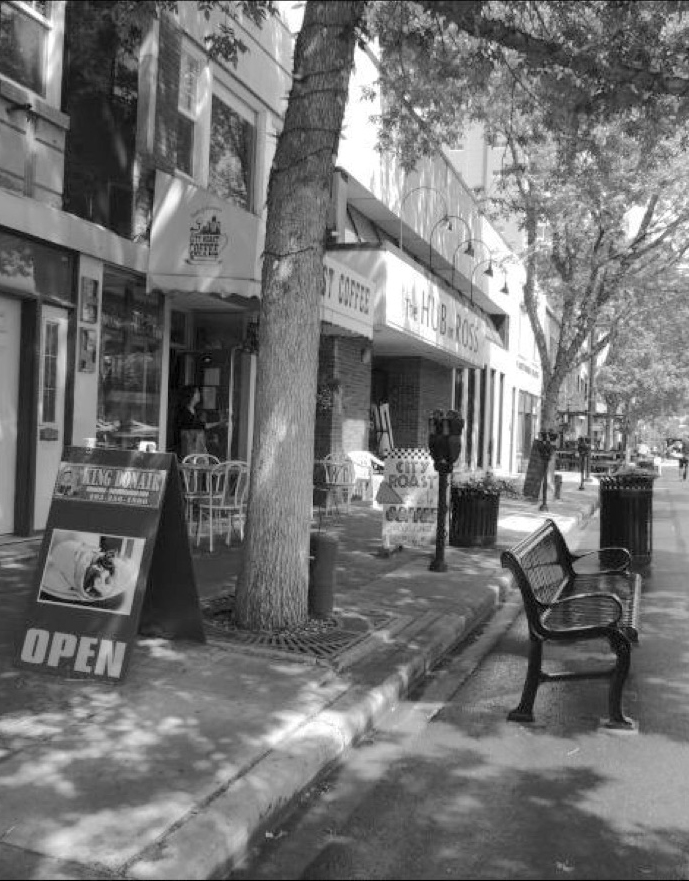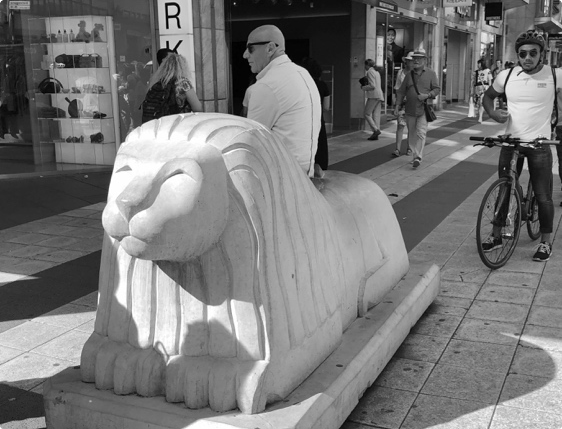…A Street As Room needs the what a room has, including seating, tables, decorative furnishings, Movable Seating, and other elements.

__Problem-statement: People need furnishings on streets in order to be comfortable, to have places to sit, to chat, to be protected, and to watch other people go by. But there are a number of challenges.__
Discussion: We have already discussed the advantages of Movable Seating in public spaces, but also their challenges for theft. The solution is that they can either be tethered down with secure chains, or removed and stored by adjacent businesses or agencies.
There are many other elements that can make a streetscape more active and appealing. Among them are protective bollards, fencing, planters, lamps, string lights, signs, banners, flags, and of course, works of art. In fact any of these elements can itself be a work of art — like the pedestrian barriers in Stockholm that are lion sculptures, symbolizing the Swedish coat of arms.

A barrier to protect pedestrians does not have to be an ugly slab of concrete, but can be an attractive piece of art and even a nice place to sit — like this lion-shaped barrier in Stockholm, inspired by the Swedish coat of arms.
In addition to being secure, these and other street furnishings also need to be durable and resistant to moisture and damage.
__Therefore: Develop street furnishings for streets, just as you would for rooms in a house. Take care to secure them, and select them for their durability, water resistance, and beauty.__

Remember to place the furnishings in groups, not in endless repetitive rows — Small Groups Of Elements. Use Construction Ornament and Human-Scale Detail…
notes
¹ There are a number of publications with more information on street furniture and its placement — see for example Yücel, G. F. (2013). Street furniture and amenities: Designing the user-oriented urban landscape. In Advances in Landscape Architecture. DOI: 10.5772/55770
See more Streetscape Patterns